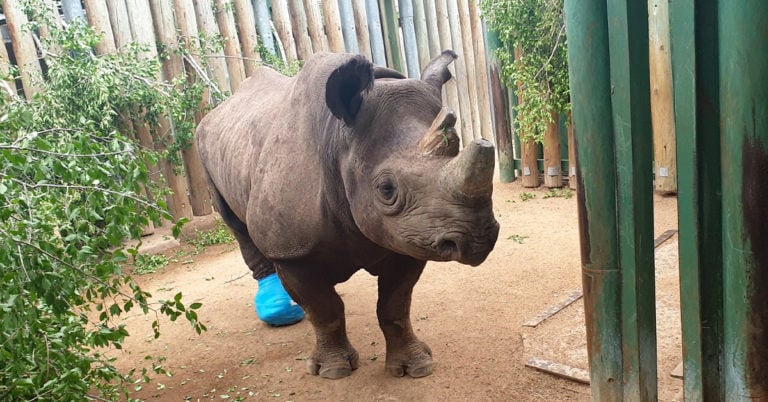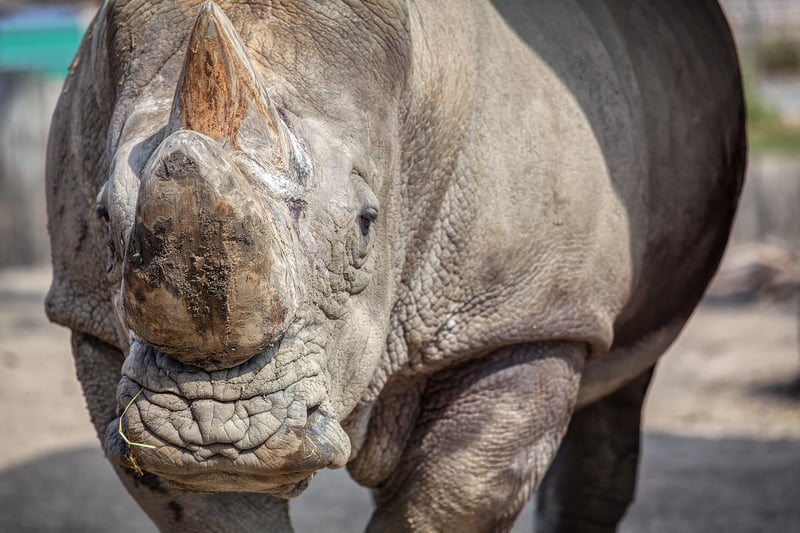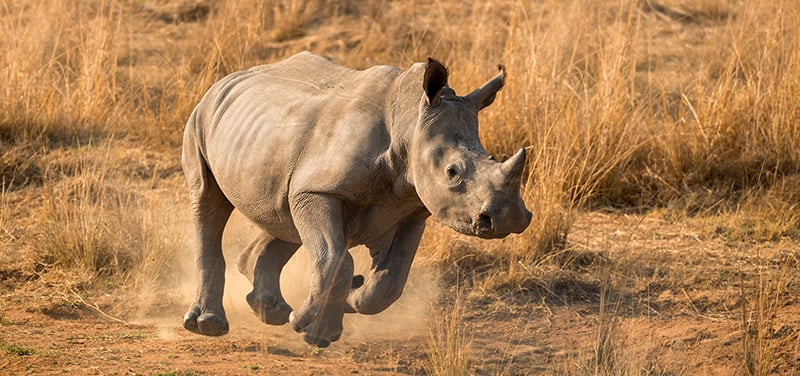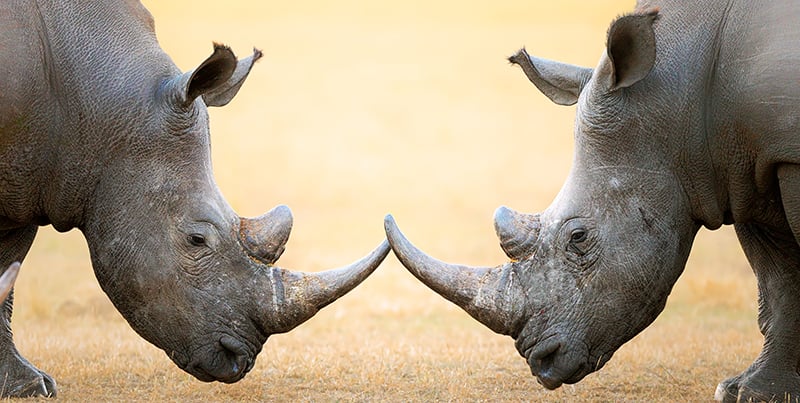5 Surviving Species: Learning More About the Rhino

Rhinos are among the most recognizable animals on Earth. But beyond their iconic horn and bulky frame, these incredible creatures are often misunderstood—and increasingly at risk. As their numbers decline, understanding their role in the environment becomes even more urgent.
Greater Good Charities is dedicated to the conservation of species identified as in peril, threatened, endangered, or close to extinction throughout the world, including rhinos.
Once there were as many as 100 species of rhinos. Today there are just five. Africa is home to black rhinos and white rhinos. Greater one-horned rhinos, Sumatran, and Javan rhinos are found in Asia. All are classified as either vulnerable, near threatened, or critically endangered.
Not Actually black or white
Both black and white rhinos are shades of gray. The name "white" likely comes from a mistranslation of the Dutch word wijde (wide), referring to the white rhino’s broad, square-shaped mouth used for grazing. Black rhinos, which have a narrower, hooked lip suited for browsing shrubs, may have gotten their name from the dark mud they love to wallow in—or simply to differentiate the two species.
gentle by nature

Despite their imposing appearance—thick skin, large horn, and considerable size—rhinos are generally calm, plant-eating animals that spend much of their day grazing and resting. Their rugged exterior hides a sensitive side: their skin, while tough, is prone to sunburn and insect bites. That’s why rhinos regularly roll in mud. It’s cooling, soothing, and provides a protective layer against parasites and the elements.
fast, not fearsome

Rhinos are often labeled aggressive because they charge. But this behavior usually stems from poor eyesight and fear, not hostility. When unsure of what they’re seeing, they may run toward it at speeds of up to 30–40 miles per hour.
the cost of myths
Poachers have devastated the rhino population in the past decade, killing thousands in order to steal their horns. Made primarily of keratin—like our nails and hair—rhino horns are used medicinally in Asia for a large number of diseases and conditions, despite no scientific evidence of curative benefits.
surprisingly social

Rhinos use a variety of sounds to communicate—trumpeting, growling, even high-pitched squeals. A happy rhino makes a unique “mmwonk” sound. They also communicate through scent. Dominant males use urine to mark territory, and dung piles serve as communal “guest books” for passing rhinos.
nature's collaborators
Rhinos, which can weigh as little as an adult human or as much as an SUV, have a symbiotic relationship with birds, particularly oxpeckers. Small enough to fit in your hand, these birds eat insects—including ticks—off rhinos’ backs. They even remove bugs from rhinos’ ears and noses. Described as “the rhino’s guard” in Swahili, oxpeckers alert rhinos when they sense danger.
Environmental stewards
%20Save%20the%20Rhino%20International-1.jpg?width=800&height=419&name=Black%20rhino%20calf%20Meimei%20(C)%20Save%20the%20Rhino%20International-1.jpg)
Rhinos are tremendous stewards of their habitats. They shape the environment and strengthen biodiversity through the grasses and vegetation they graze on. Rhinos’ presence is crucial to the survival of our ecosystems.
You can help support our work protecting species like rhinos by making a one-time or monthly gift.

%20Save%20the%20Rhino%20International-1.jpg)
